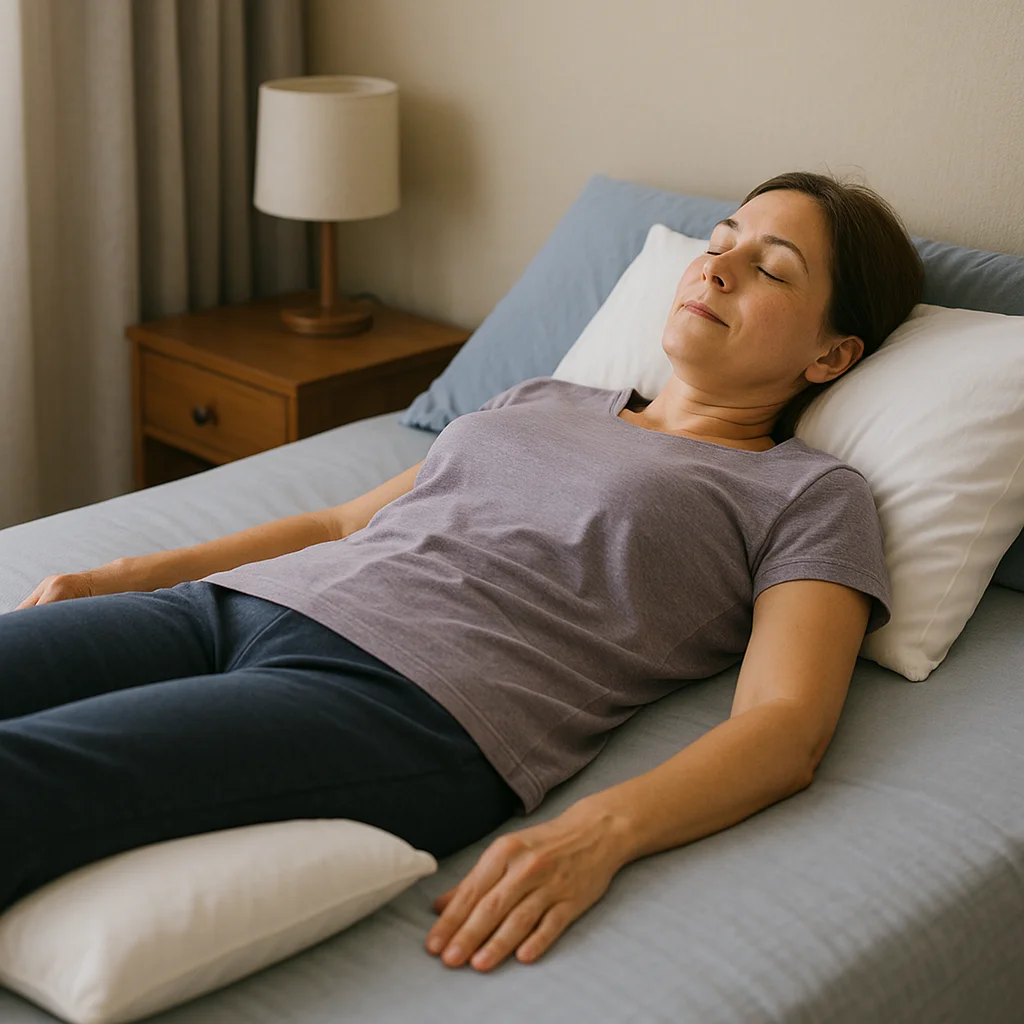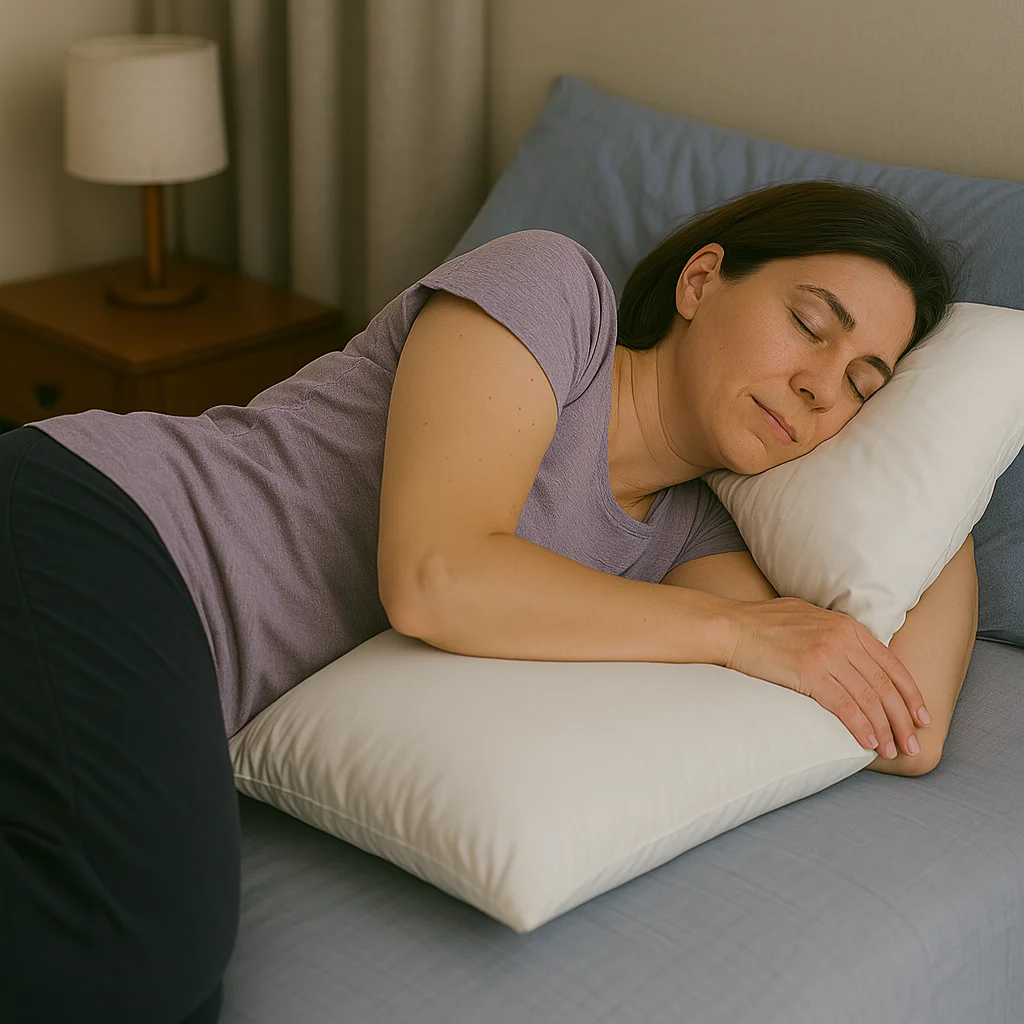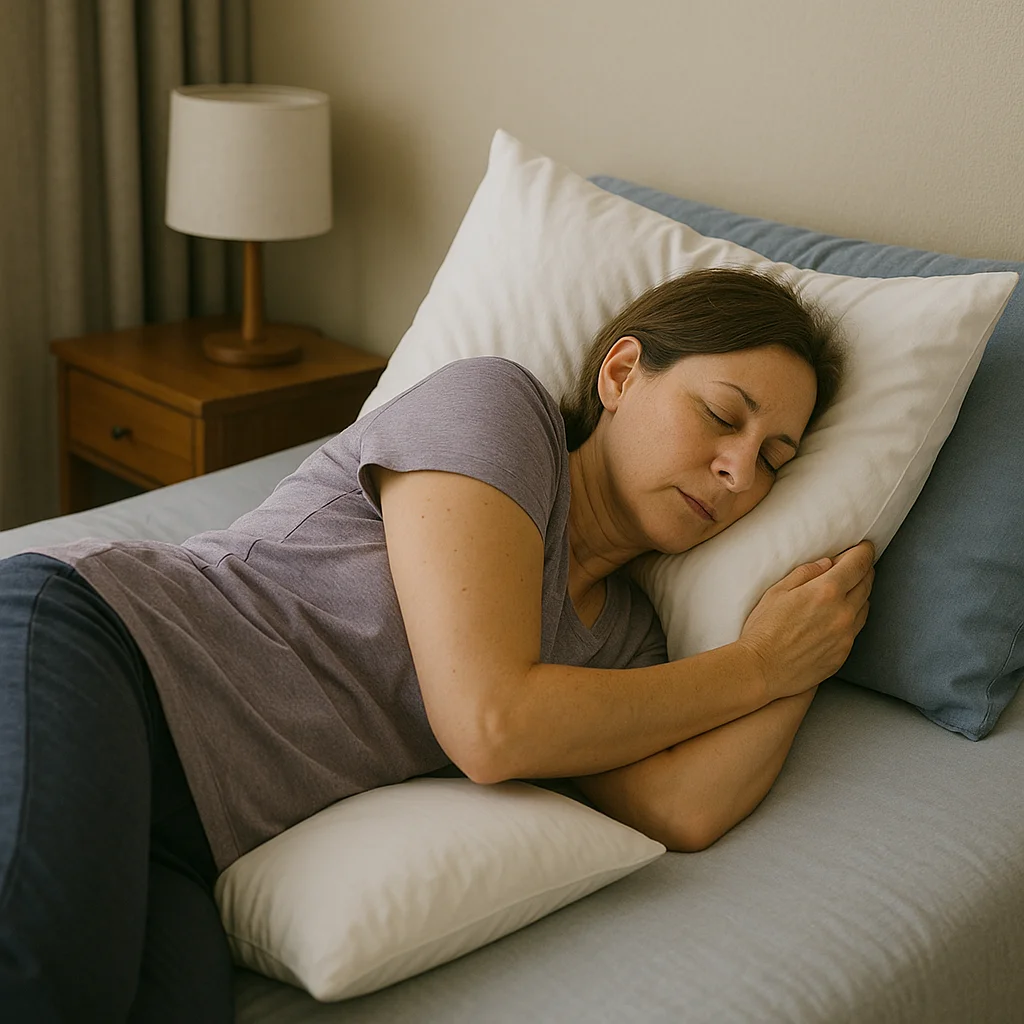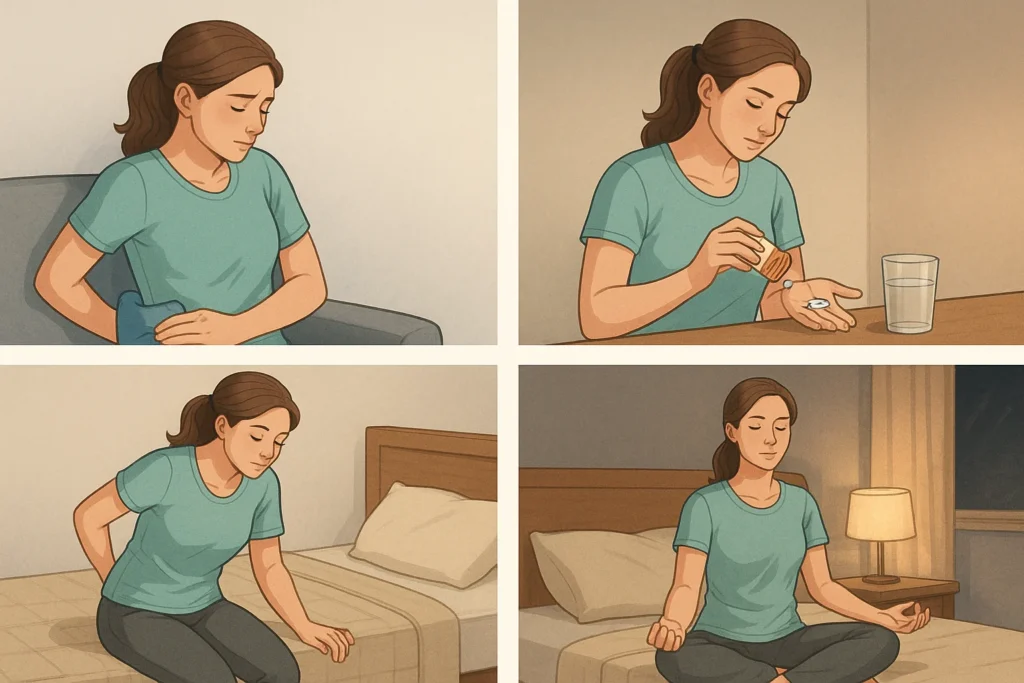Epidural steroid injections (ESIs) offer much-needed relief from chronic back pain, sciatica, spinal stenosis, and other nerve-related discomforts. But what many patients overlook is how vital proper sleep positioning is in the healing process. The best position to sleep after an epidural steroid injection can significantly impact pain levels, healing time, and overall outcomes.
In this comprehensive guide, we’ll explore the ideal sleep positions, why posture matters after your procedure, and how to ease discomfort while maximizing recovery—all backed by medical insight.
Also Read: The Dark Side of Epidural Steroid Injection
Understanding Epidural Steroid Injections
An epidural steroid injection involves injecting a corticosteroid into the epidural space of the spine to reduce inflammation and pain. These injections are commonly used to manage:
- Herniated discs
- Lumbar spinal stenosis
- Sciatica
- Degenerative disc disease
- Radiculopathy (nerve pain)
According to the Cleveland Clinic, ESIs are typically performed under fluoroscopic guidance for precision and may provide relief lasting from several days to a few months depending on the condition and individual response.
Why Sleeping Position Matters After an Epidural
Sleeping after an epidural steroid injection isn’t just about finding a comfortable position—it’s a critical part of your recovery process. The way you position your body during sleep can directly impact how effectively the steroid works, how much pain you experience, and how quickly inflammation subsides.
When your spine is properly aligned during rest, it allows the anti-inflammatory medication to settle in the epidural space and do its job without interference. On the other hand, poor posture while sleeping—like twisting the lower back, arching excessively, or placing pressure on the injection site—can lead to increased irritation, delayed healing, and unnecessary discomfort.
Here’s why your sleeping position matters so much:
1. Maintains Spinal Alignment
Proper posture helps keep the natural curvature of your spine intact. This reduces muscular strain and ensures there’s no additional stress placed on sensitive spinal nerves or discs, especially in the lower back.
2. Prevents Further Nerve Irritation
After an injection, nerve roots may remain inflamed for several days. Poor sleeping positions—such as stomach sleeping or twisted postures—can press on already irritated nerves, worsening pain and prolonging symptoms like sciatica or numbness.
3. Enhances Anti-Inflammatory Effects
The steroid’s primary goal is to reduce inflammation and ease compression on nerves. Sleeping in the correct position minimizes mechanical stress and allows the medication to work uninterrupted, especially during the initial 24 to 72 hours after injection.
4. Minimizes Pressure on the Injection Site
Certain positions can increase localized pressure or pull on the area around the injection, which may cause soreness, stiffness, or even swelling. By choosing the right sleeping position, you protect the injection site from unnecessary trauma or tension.
5. Supports Natural Healing Mechanisms
Quality sleep is essential for cellular repair, immune response, and nervous system recovery. A supported, pressure-free sleeping posture improves circulation and promotes deep, restorative sleep—both of which are vital after any spinal procedure.
Best Position to Sleep After Epidural Steroid Injection
Let’s explore the most recommended sleep postures after your injection, based on medical advice and user comfort.
1. Sleeping on Your Back with Pillow Under Knees

This is the most recommended position post-injection—especially for lumbar ESIs.
Why it works:
- Keeps the spine neutral
- Reduces pressure on the lower back
- Minimizes strain on muscles around the injection site
How to do it:
- Lie flat on your back
- Place a pillow or bolster under your knees
- Use a medium-firm mattress or lumbar-support cushion
This position prevents hyperextension and aligns your spine without twisting.
According to Mayo Clinic, keeping knees elevated helps decompress the lumbar region and can alleviate post-procedural discomfort.
2. Side Sleeping with Pillow Between Knees

Side sleeping is the next best option—ideal for those who find back sleeping uncomfortable.
Best practices:
- Sleep on the side opposite the injection site (e.g., if injection was on the right, sleep on your left)
- Place a firm pillow between your knees to maintain hip-spine alignment
- Use a neck-aligned pillow to avoid strain on the cervical spine
This position can help reduce rotational stress on the lower back and keep your posture stable through the night.
Note: Avoid curling too tightly into a fetal position as this can put pressure on the lumbar spine.
3. Avoid Sleeping on Your Stomach

Stomach sleeping is discouraged after an epidural steroid injection, particularly in the lumbar region.
Why to avoid:
- Hyperextends the spine unnaturally
- Increases pressure on lower back muscles and discs
- May reverse the benefits of the steroid by compressing nerves
If stomach sleeping is your habit, try training yourself to side-sleep with the help of strategically placed pillows behind your back or body wedges.
Additional Tips for Better Sleep After an Epidural Injection

Optimizing your sleeping posture is just one part of post-injection care. Here are other strategies to ensure restful nights and faster recovery:
1. Apply Cold Packs Before Bed
- Apply ice for 15-20 minutes a few hours after the injection (especially within the first 48 hours).
- It helps reduce swelling at the injection site.
2. Time Your Pain Medication
- Follow your physician’s advice and take prescribed meds 30-60 minutes before bedtime if needed.
3. Choose the Right Mattress
- Use a medium-firm mattress that supports the natural curve of your spine.
- A mattress topper with memory foam can add comfort without sacrificing spinal alignment.
4. Practice Sleep Hygiene
- Dim lighting 1–2 hours before bed
- Avoid caffeine, alcohol, or heavy meals
- Try guided meditation or breathing exercises
These tips can work synergistically with proper positioning to improve the quality of your sleep and recovery.
How Long Should You Follow These Sleeping Positions?
Typically, the first 24–72 hours post-injection are most critical for healing, and you should strictly follow sleep guidelines during this period. However, if you continue to experience pain, these sleeping strategies may need to be extended for up to a week or longer.
If you notice:
- Numbness or tingling when lying in certain positions
- Pain that increases at night
- Disrupted sleep due to discomfort
… consult your physician. You may need to adjust your posture or explore further imaging and care.
When to Resume Normal Sleeping Positions
Most people can return to their preferred sleeping positions within 4–7 days post-injection—provided their symptoms improve and pain levels drop. However, resuming stomach sleeping or slouched positions prematurely can delay recovery or worsen inflammation.
The North American Spine Society recommends modifying sleeping and sitting positions for at least one week after any spinal injection to maximize efficacy.
When to Seek Medical Advice
Though mild soreness or discomfort after the injection is normal, you should seek medical attention if you experience:
- Severe or worsening pain while lying down
- Redness, swelling, or discharge at the injection site
- Fever or chills
- Loss of bladder or bowel control
- Numbness that radiates beyond the injection area
These symptoms could signal an adverse reaction or a complication like infection or nerve damage.
FAQs About Sleeping After an Epidural Steroid Injection
Conclusion
Your recovery from an epidural steroid injection doesn’t end at the clinic. The best position to sleep after epidural steroid injection plays a key role in supporting the steroid’s anti-inflammatory action, minimizing discomfort, and promoting restful recovery.
By choosing spine-friendly sleep positions like back sleeping with knee support or side sleeping with a pillow between your knees, you create the optimal environment for your body to heal. Combine this with good sleep hygiene, pain management, and mattress support, and you’ll be well on your way to pain-free nights.
Always follow your provider’s advice and don’t hesitate to ask questions if your sleep discomfort persists.
Disclaimer: The content on Wellness Derive is for informational purposes only and not a substitute for professional medical advice, diagnosis, or treatment. Always consult a healthcare provider for medical concerns.


